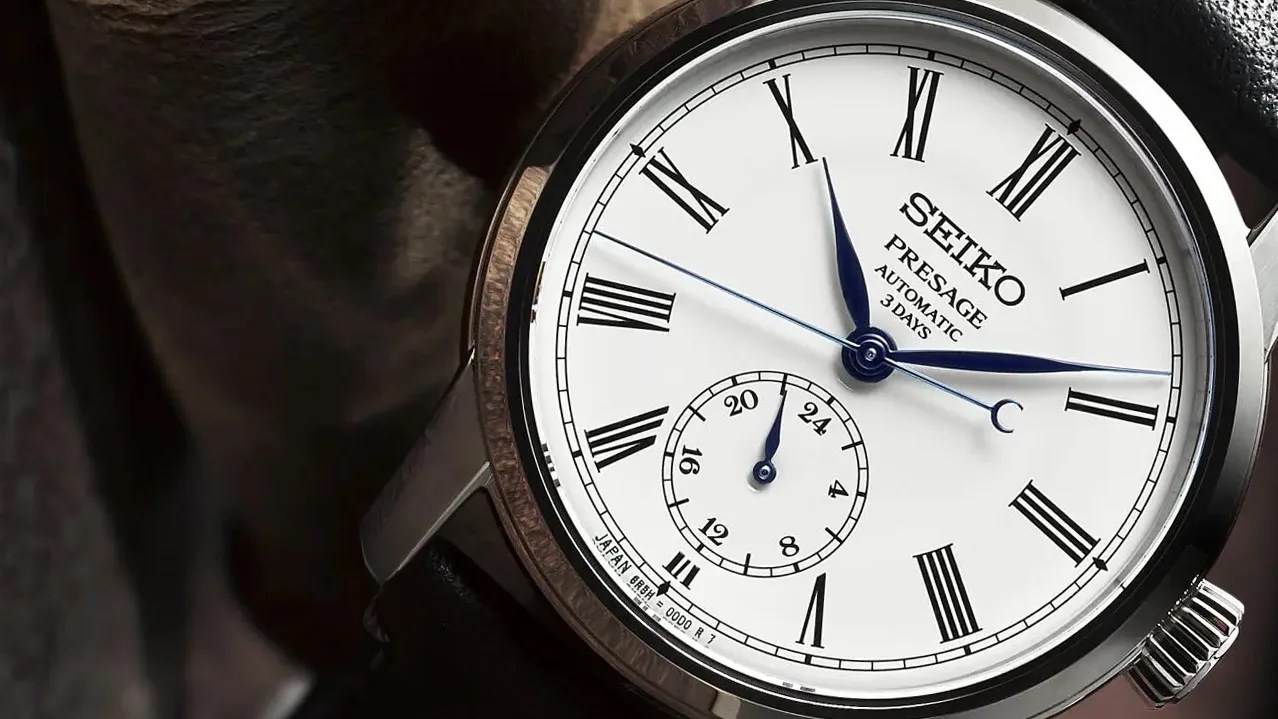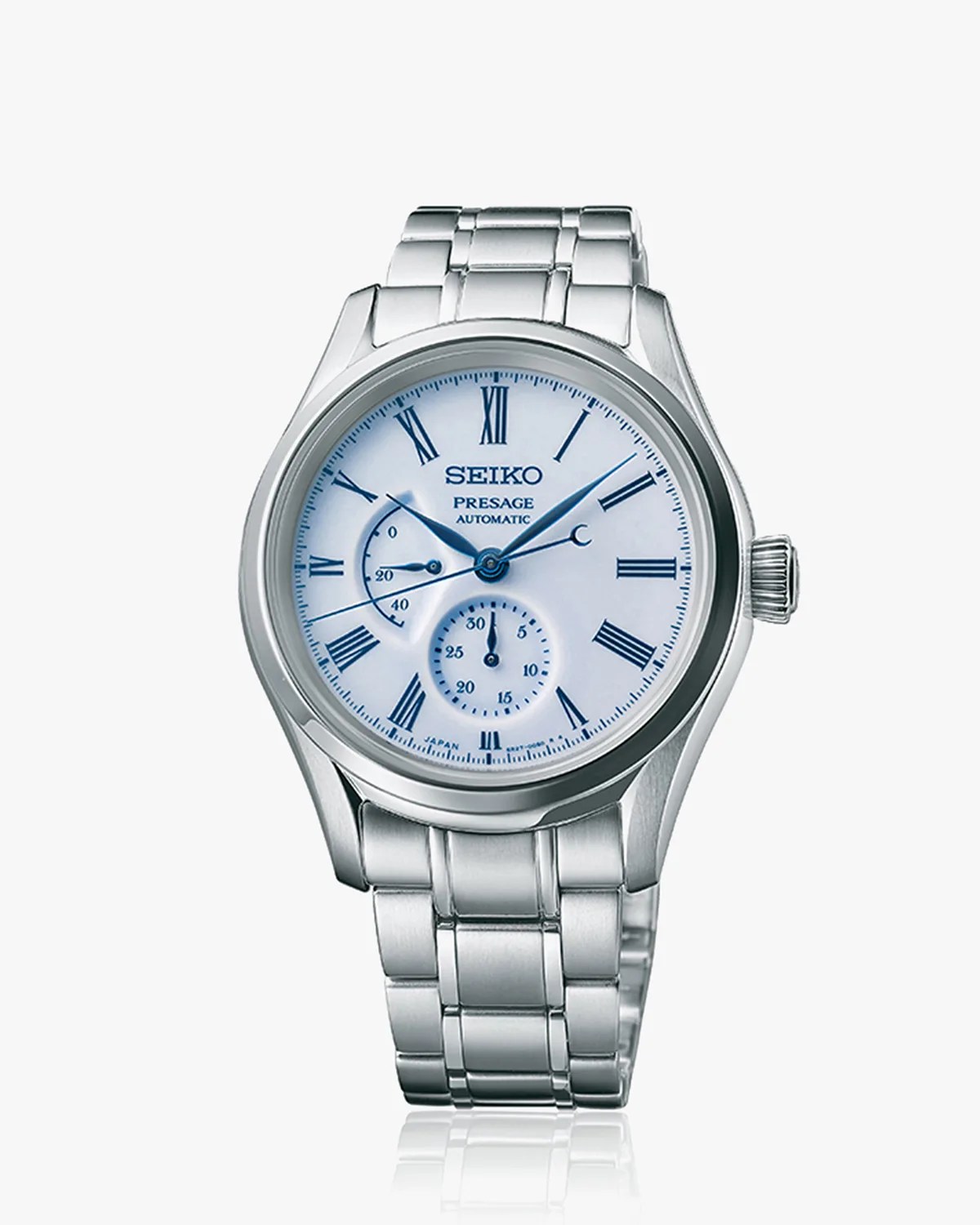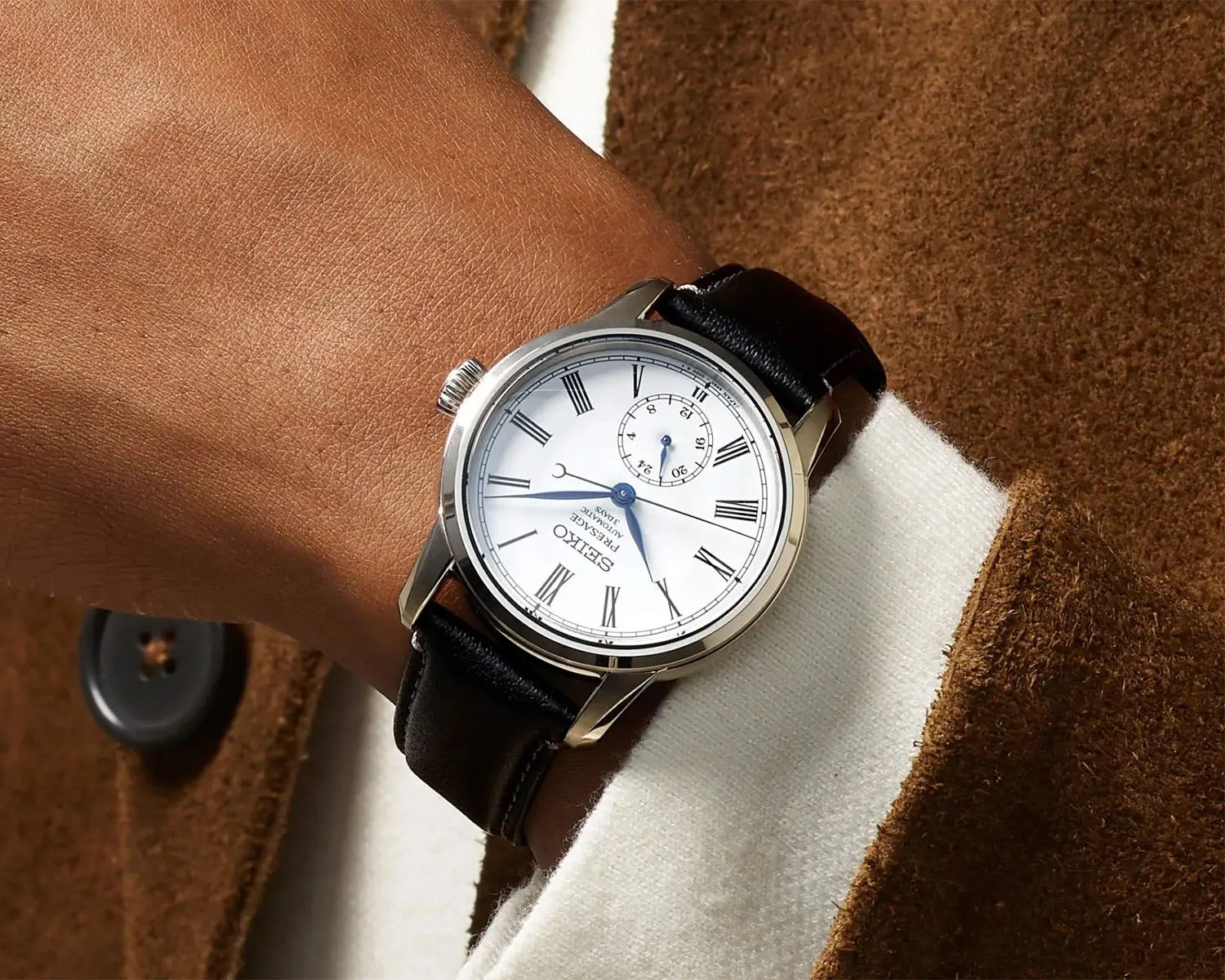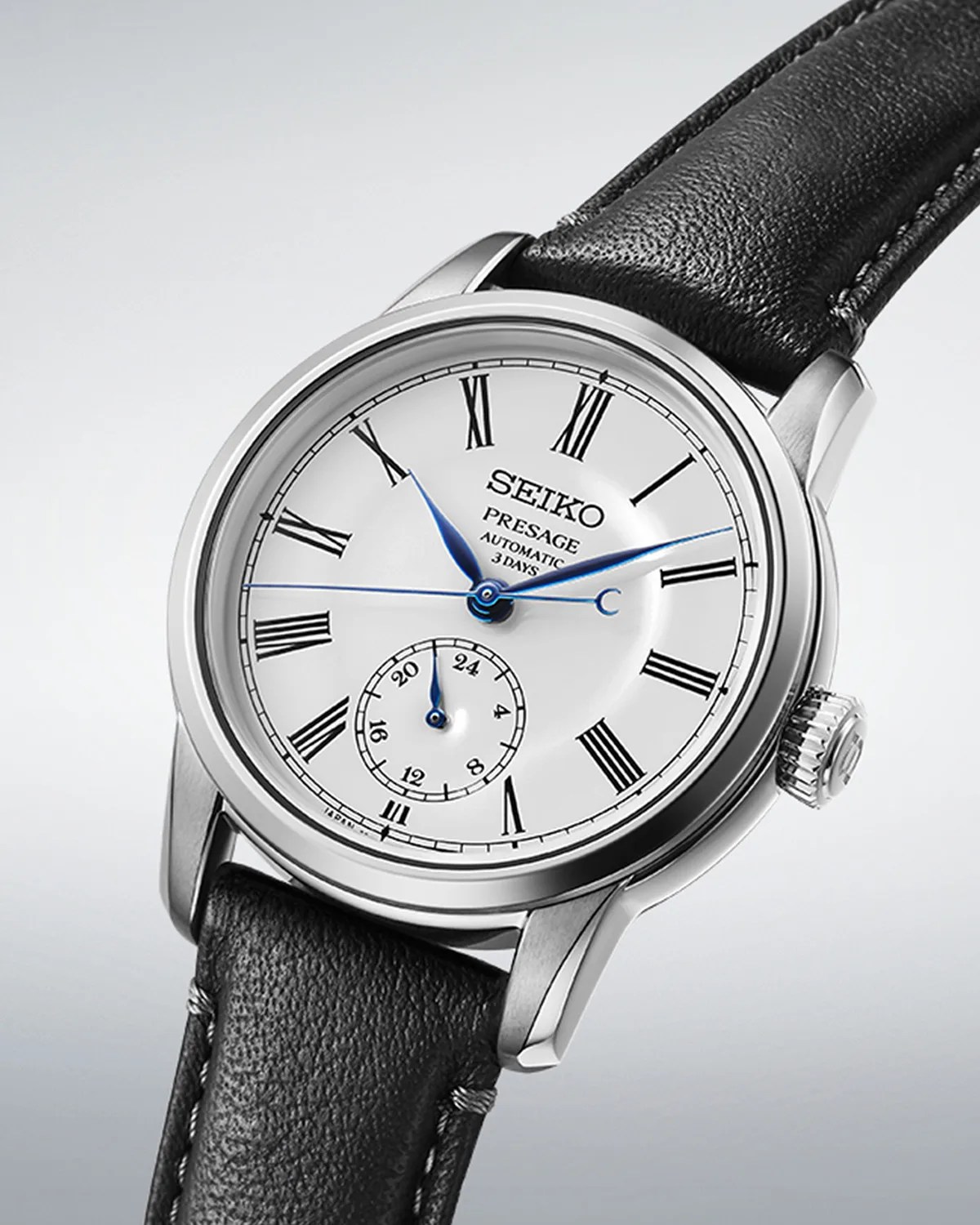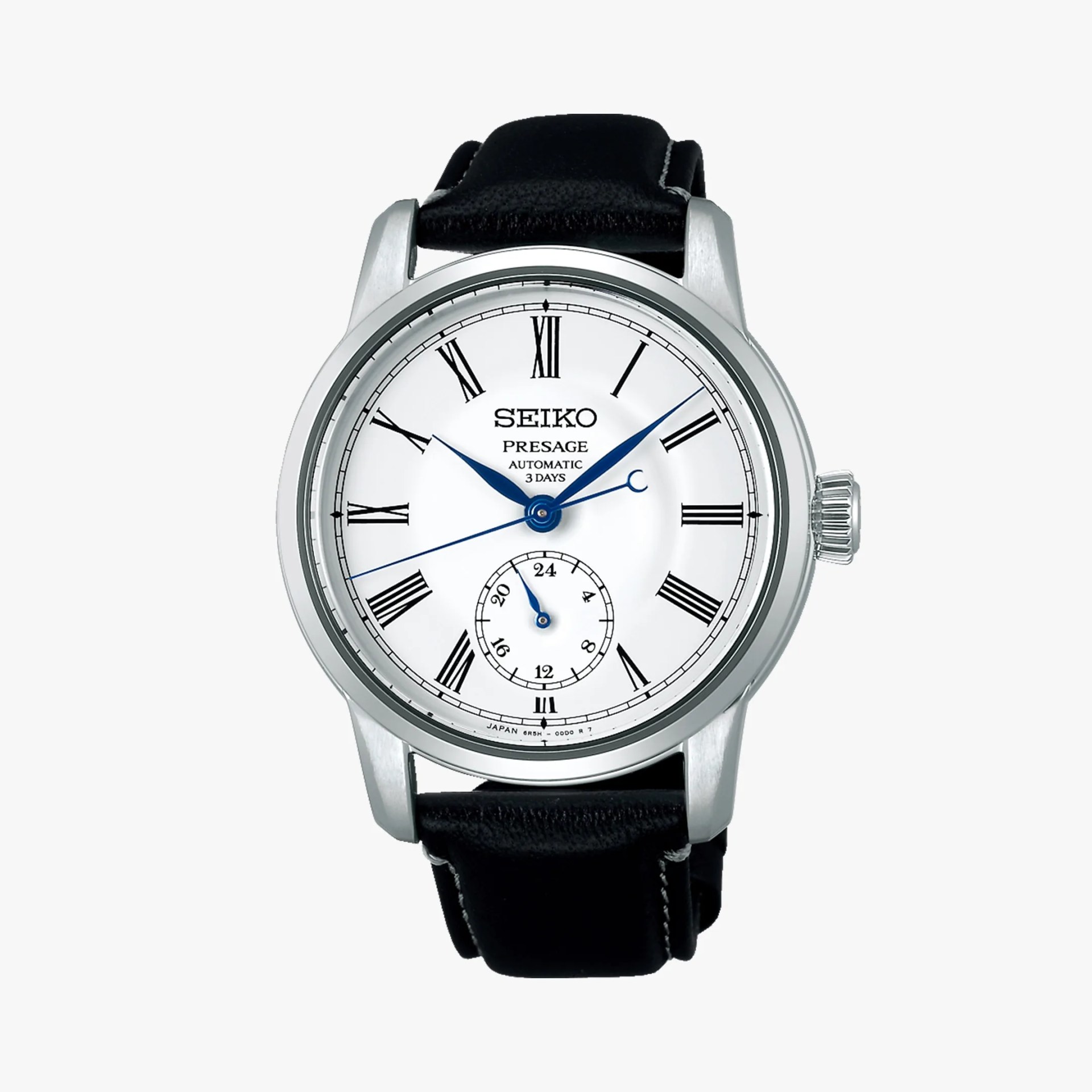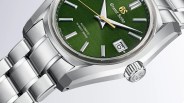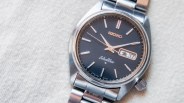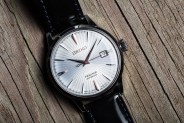Seiko’s first wristwatches didn’t come out until the 1900s. But slender, oblong Roman numerals placed inside a dashed outside track have been part of the brand’s iconography since 1895, when it started selling pocket watches.
Today, the dial pattern is a signature feature of the Presage collection but a new reference, SPB495J1, takes that heritage a step further.
A 24-hour subdial placed at six o’clock recalls a dial design dating back over a century to the company’s founding. It originally housed the seconds hand, which was typical for pocket watches in the late 19th and early 20th centuries.
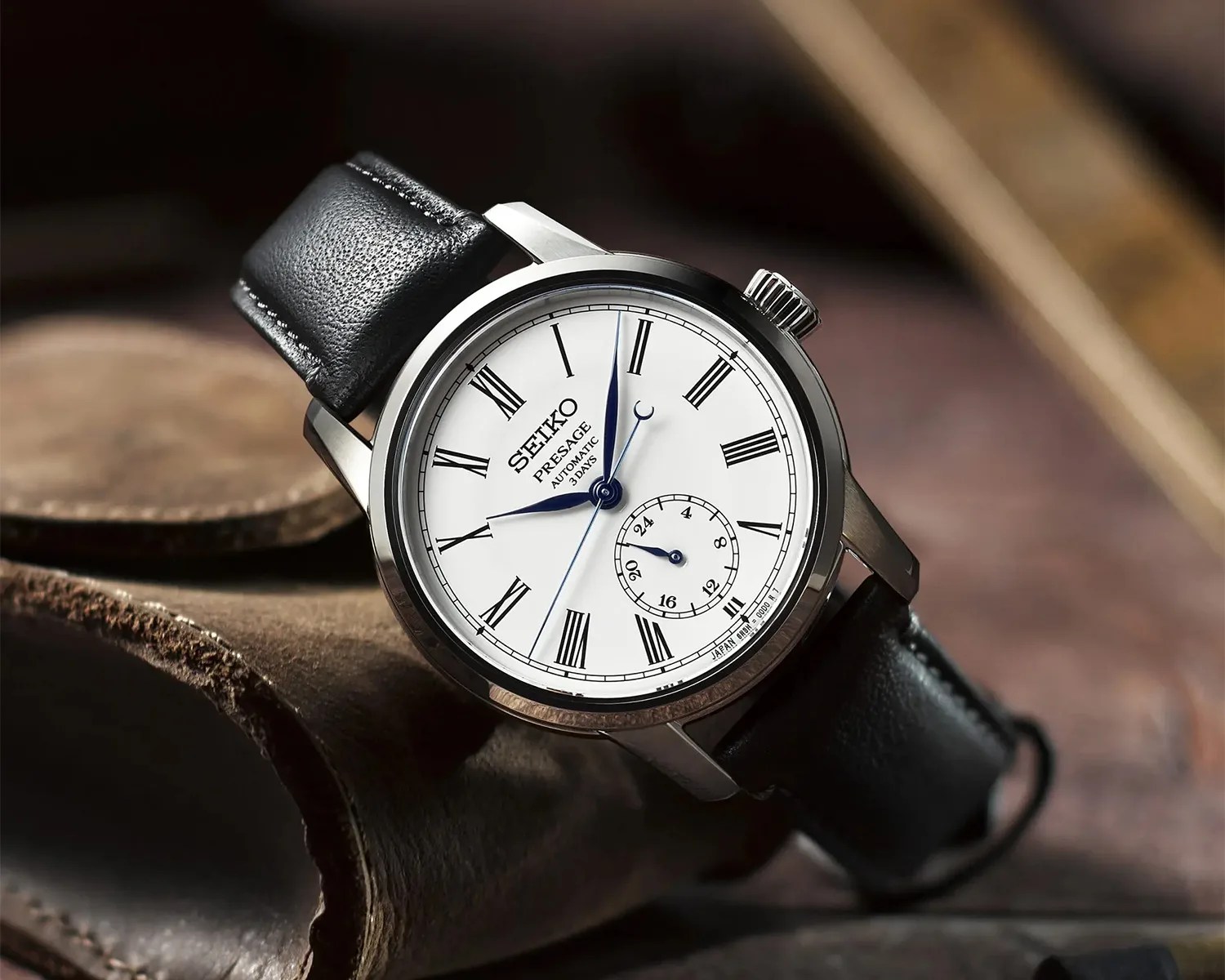
Deep time
Seikosha, as the company was initially known, spent three years developing its first pocket watch just before the turn of the century. The Time Keeper was powered by a cylinder escapement and was released in 1895. Its dial has been a point of reference for Seiko ever since.
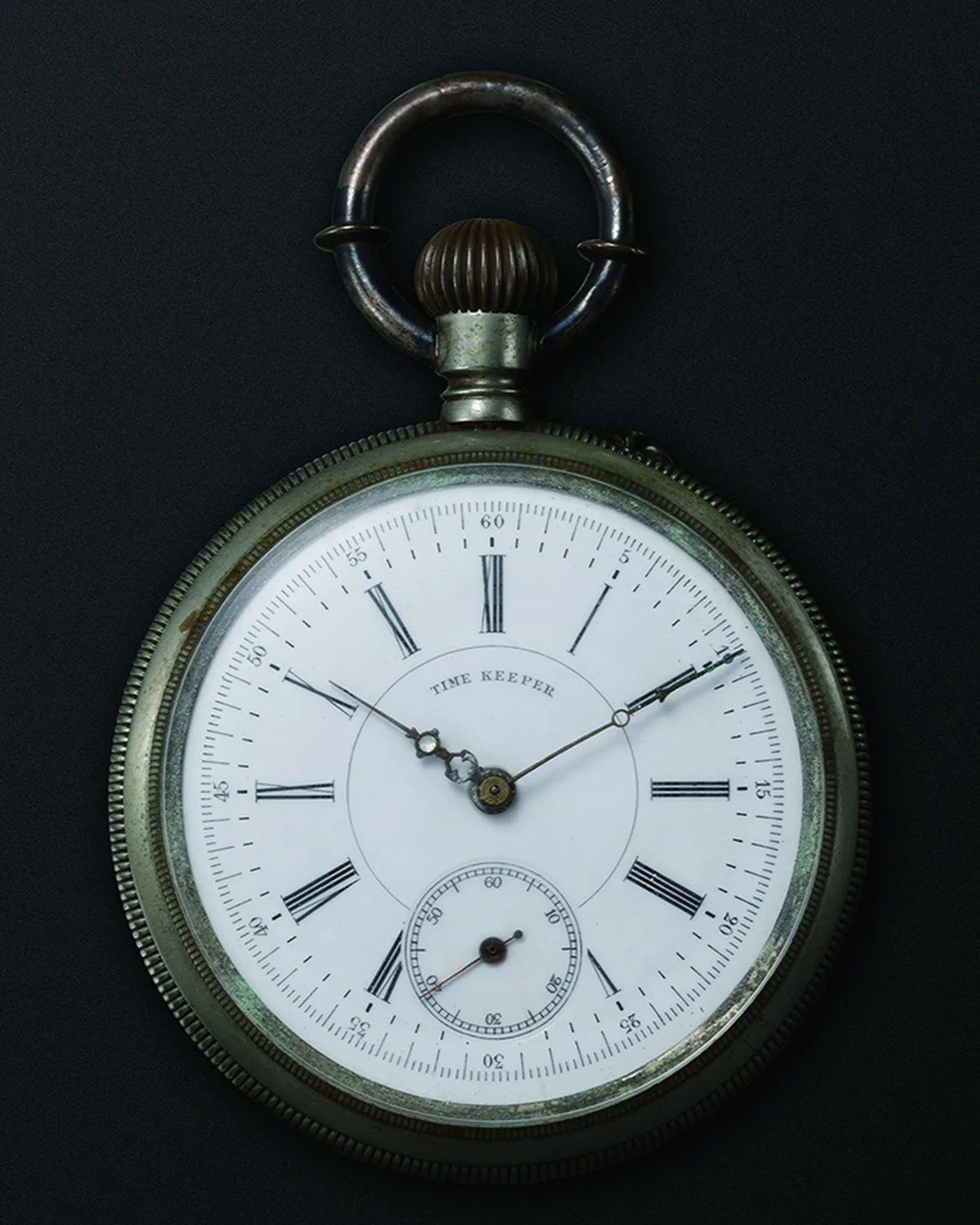
That initial dial design remained unchanged until Seikosha released Japan’s first wristwatch in 1913, replacing the Roman numerals with stylized Arabic numerals. However, the proportions and layout of the subdial stayed the same through the 1930s.
